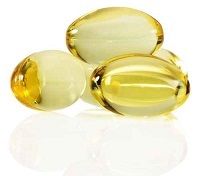Proximal and Distal Colon Have Different Vitamin D Responses
The proximal and distal colon act like two different organs when it comes to biological function and the microbiota that live there. The difference is seen even at the gene transcriptional level and response to vitamin D, a team of researchers from the University of Chicago reported.

The proximal and distal colon act like two different organs when it comes to biological function and the microbiota that live there. The difference is seen even at the gene transcriptonal level in response to vitamin D, according to a team of researchers from the University of Chicago.
The researchers reported on their work May 18 in an abstract presented at the 2015 Digestive Disease Week conference in Washington, DC.
Vitamin D has been shown to protect against colorectal cancer an inflammatory bowel disease, they said.
Dr. Brandon Mapes and colleagues studied colonic biopsies performed on 7 African American men who were getting routine screenings, taking 2 biopsy samples each from the cecum and rectosigmoid colon.
These samples were incubated and then their RNA was extracted.
The researchers found that colonoids from the proximal and distal colon triggered a different gene response when exposed to vitamin D.
There are 2 known top up-regulated genes in response to vitamin D treatment: CD14 and CYP24A1.
The team found that in the ex vivo cultures, CD14 expression was down-regulated in response to vitamin D in the proximal colon, and up-regulated in the distal colon. In a murine study they found similar results.
“These results suggest that vitamin D might play a role in regulating innate immunity in an anatomic site-specific manner in the colon, possibly due to different microbial environments in the proximal versus distal colon,” they wrote.
“While not statistically significant, there was a trend for greater up-regulation of CYP24A1 in the distal colon which could impact the amount of available active vitamin D,” something that would need to be confirmed by future studies, the team concluded.